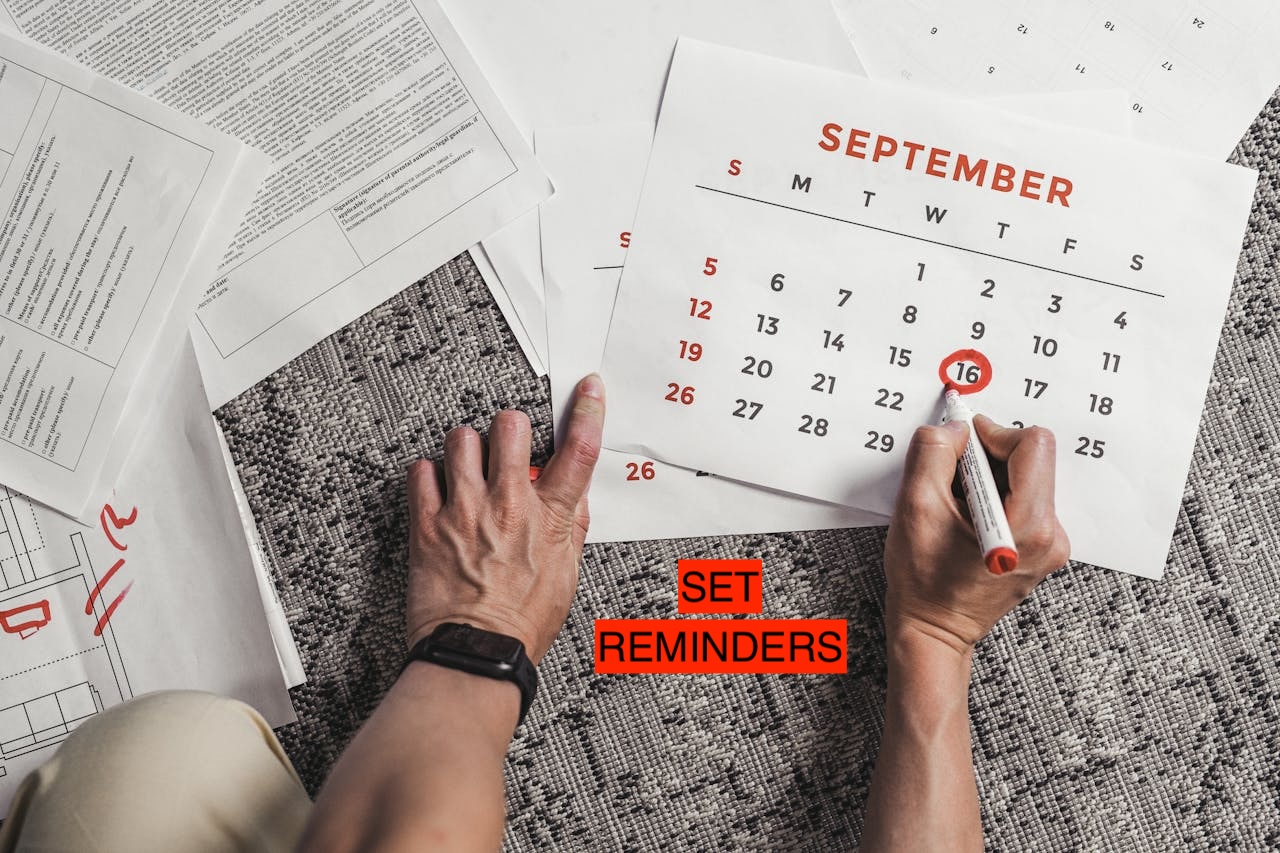

Whether you’re working on a campaign for your 9-to-5 or completing a freelance project for an outside client, deadlines are crucial to your success as an employee or a freelancer. And missing a deadline doesn’t only make you look bad but it can lead to a loss in clients, assignments and ultimately, money. That’s why it’s incredibly important to understand every project you take on, be organized, map out your tasks and create a plan-of-action. By staying on top of your projects and their deadlines, you’ll avoid the stress of last-minute procrastination, submit top-notch work and build a reputation that will garner you respect, trust and ultimately, even more projects and clients.
Of course, deadlines can be tricky to tackle. To help, here are 10 tips to ensure you never miss a deadline.
1. Understand what is expected of you.
It’s easy to walk out of a meeting or hang up after an hour-long phone call and come to realize you don’t know exactly what you need to do for a project. Perhaps you covered a number of areas for an upcoming campaign, which was incredibly helpful, but maybe your task wasn’t clearly defined.
However, by the time that one-hour mark hit, all you wanted to do was walk out the door or hang up that phone. We’ve all been there — and it’s never a good position to realize you don’t know exactly what is expected of you by your client.
Rather than trying out a number of different variations of assignments hoping one is the correct way, instead, clarify early on exactly what your client expects from you and the outcome they’d like to achieve. You’ll not only save time but also energy as you avoid stressing about doing something wrong altogether.
2. Keep an updated calendar of projects and deadlines.
Whether you’re a freelancer or a full-time employee, being organized and keeping an updated calendar of projects and deadlines will help you stay on top of your assignments. It’s easy to write down a deadline in your smartphone’s notes or on a post-it somewhere, but that’s not necessarily the best method.
Not only can you lose track of these notes but having too many in different places and formats can become confusing. What’s a solution? If you have a designated calendar or list on-hand where you keep all of your projects’ details and deadlines, you’ll know exactly where to look every time.
3. Map out your priorities.
It’s important to approach every project and assignment efficiently — and, in the correct order. If you don’t, you’ll wind up wasting lots of time on areas of a project that aren’t ready to be approached yet because you haven’t prepared the necessary groundwork.
For example, if you’re tasked to organize a large event, before you start calling venues, you have to gather important information like target number of guests, budget, timing and other relevant information. Every project requires a specific order of tasks to be completed and in order to successfully deliver, map out the necessary steps and tasks, label them in chronological order and get started on task number one until you reach completion.
Pro tip: Try using the Critical Path Analysis. Draw out a Critical Path Analysis Chart by listing every activity required in your project. Then, next to each activity, write out an estimated start date, an estimated amount of time it will take to complete and if it’s a “parallel” or “sequential” task. If it’s parallel, connect it to the other tasks on the list that you can work on simultaneously; if it’s sequential, write out which stage the task depends on.
4. Be realistic.
It’s easy to overestimate the amount of time it will take you to get something done. Whether you’re trying to impress a client or you simply underestimated the amount of work a certain project required, it’s important to be realistic about deadlines for the sake of yourself and your client. Because if you end up missing a deadline, you’ll not only be disappointed in yourself but your client’s perception of you will likely also be affect.
To avoid situations like these, always give yourself extra time to work on a project. That way if something unexpected happens, you luckily have a extra few days to fix it. And if you finish the task before it’s deadline — even better. Submitting a project before its deadline is always a good sign to clients.
5. Front-load your days and weeks.
Every week, plan to tackle the most difficult and pressing tasks first, early-on. Try to front-load your weeks by getting started on these tasks early in the mornings and early in the work weeks on Mondays or Tuesdays. That way, you’ll avoid any stress that comes with racing to meet a specific deadline later in the week.
Also, if something comes up with another client or at your 9-to-5 job later in the week, requiring your full attention, you won’t have the extra stress of this project because you’ve already completed its toughest aspects.
6. Reduce distractions.
It’s easy to get distracted, whether that’s by people or things. In order to plan for and reduce any distractions that will deter your focus on a project, block-off a specific time frame for this work.
During this time, put your phone on silent, shut off email and let the people around you know that you’ll be unreachable for the next few hours. One helpful tip to achieve this is to book this time frame in advance and mark it on your public calendar.
By doing so, people will know not to approach you during this time and you’ll be mentally prepared to focus during these hours.
7. Never overcommit.
One of the top reasons people miss deadlines is because they overcommit themselves. When you stretch yourself too thin — whether that be by taking on too many freelance clients or projects at work — you’re setting yourself up for failure.
By overloading yourself, you’re not only putting unnecessary stress on yourself, but you likely won’t submit your best work or miss a deadline altogether. This can be toxic and lead you to losing credibility and more importantly, losing clients.
8. Give yourself a cushion.
Always give yourself a cushion when it comes to deadlines. If something comes up that bites into the time you were hoping to spend on a project, if you give yourself a time cushion then you’ll be able to work on it later. If you’re unsure how much of a cushion to give yourself, take a project and break it down into smaller tasks.
With each small task, estimate how long each will take and tack on a small time cushion to each of those estimates. Then, add up all of these estimates — that’s how much of a cushion you should give yourself overall when deciding on a realistic deadline with a client.
9. Focus on the first step.
After you’ve mapped out a project and broken it down into steps and small tasks, immediately start with task number one. Don’t let yourself become overwhelmed by the large number of tasks ahead of you and instead, just get started; don’t think about any of the other tasks ahead and just focus on completing task number one.
This way, you’ll avoid feeling overwhelmed and understand just how long things will take you overall.
10. Communicate with your client.
It’s important to create an open communicative and honest relationship with the client or company you’re working for. Sometimes, certain companies will be more hands-on in your process and appreciate consistent updates, while others might just want the final product at its due date.
Whatever the case, make sure to send updates to your client on the project — whether that’s a daily, weekly or monthly update. This way, you can garner any important feedback and make changes going forward; you’ll also begin building a working relationship with your point of contact to help with future projects.











Rose Leadem
Rose is a writer and artist living in New York City. She writes for magazines, startups and websites, including Entrepreneur Magazine, Frontrunner Magazine, Homepolish and more.